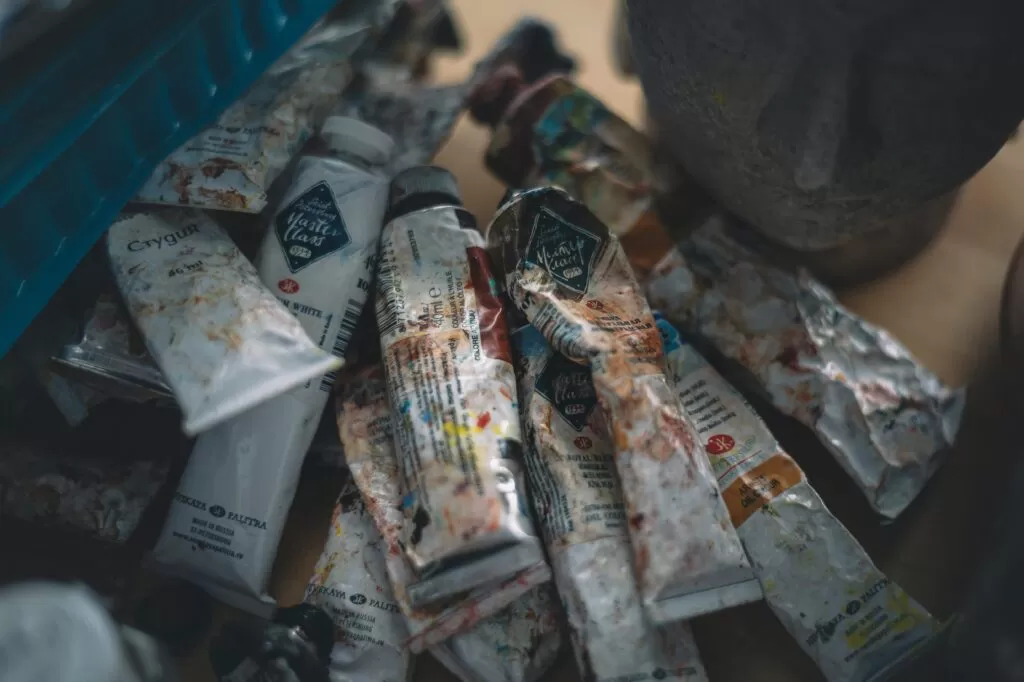Have you ever wished that your artwork could magically transform before your eyes? Imagine a painting that changes color with the touch of a hand, revealing hidden details and stories within. Well, thanks to the incredible properties of thermochromic paints, this dream can become a reality. These remarkable pigments have the ability to react to changes in temperature, bringing an element of surprise and interactivity to any artistic creation. In this article, we will delve into the fascinating world of thermochromic paints and explore how they can be used to breathe life into your artwork like never before.
What are thermochromic paints?
Thermochromic paints are a fascinating innovation in the field of color-changing technology. Unlike typical paints, which stay the same color no matter the temperature, thermochromic paints magically transform in response to heat. This unique characteristic is made possible by special pigments that have the ability to change their molecular structure based on temperature fluctuations.
One exciting application for thermochromic paints is in the automotive industry. Imagine driving a car with a paint job that changes colors depending on the temperature outside! Not only would this create an eye-catching and dynamic vehicle, but it could also serve as a practical feature, alerting drivers to potentially dangerous weather conditions. Additionally, these innovative paints can be used for security purposes by incorporating them into valuable items or important documents as anti-counterfeiting measures.
In our everyday lives, thermochromic paints offer endless possibilities for self-expression and creativity. From mood rings to heat-sensitive coffee mugs, these paints can be used in countless ways to add an element of surprise and magic to our surroundings. Whether it’s through fashion accessories or interior design elements, thermochromic paints open up new avenues for customization and personalization that truly engage our senses and bring joy into our lives.


How do thermochromic paints work?
Thermochromic paints may seem like something out of a science fiction movie, but they are very real and quite fascinating. These paints have the unique ability to change color in response to temperature fluctuations, captivating both artists and scientists alike.
The secret behind thermochromic paints lies in their composition. They contain tiny microcapsules filled with pigments that undergo a chemical reaction when heated or cooled. The pigments within these capsules are designed to be transparent at lower temperatures, allowing the underlying surface to show through. However, as the temperature increases, the pigments become opaque and display a new color.
This remarkable phenomenon occurs due to molecular changes within the paint’s structure. At lower temperatures, the molecules are tightly packed together in an ordered fashion, allowing light to pass through and creating a specific color. But as heat is applied, these molecules begin moving more freely and become disordered, scattering the light and resulting in a different color or opacity.
These properties make thermochromic paints incredibly versatile and captivating for various applications. From heat-sensitive mugs that change color when filled with hot beverages to clothing that alters its pattern based on body heat – these reactive paints provide endless possibilities for creativity and innovation within numerous industries.
Techniques to use with thermochromic paints
1. Layering and Blending Colors:
One exciting technique for working with thermochromic paints is to layer and blend different colors together. By applying multiple layers of paint, each with a different temperature activation range, you can create stunning gradient effects that appear as the temperature changes. For example, starting with a layer of blue thermochromic paint that activates at lower temperatures, followed by a layer of red paint that activates at higher temperatures, you can achieve an eye-catching transition from cool to warm tones. Experimenting with different color combinations and layering techniques allows artists to customize the effects based on their creative visions.
2. Masking Techniques:
Another interesting approach when working with thermochromic paints involves using masking techniques to conceal or reveal certain aspects in your artwork as the temperature alters. This method is particularly effective when combined with other conventional painting techniques like stenciling or freehand painting. By covering specific areas of your canvas or substrate while applying thermochromic paint, you can create hidden patterns or messages that emerge only when heated or cooled. The element of surprise adds an interactive dimension to the artwork, encouraging viewers to engage physically by touching or interacting closely with the piece in order to fully appreciate its transformative qualities.


Tips for achieving stunning effects in thermochromic painting
1. Experiment with Different Color Combinations:
One of the most exciting aspects of thermal painting is the ability to create stunning color transformations. By using heat-sensitive pigments that change colors at different temperatures, you can achieve mesmerizing effects on your canvas. As a tip, try experimenting with various color combinations to enhance the depth and visual impact of your artwork. For example, pairing warm colors like red and orange with cool colors like blue and green can create a striking contrast that captivates viewers.
2. Consider the Movement and Flow:
Thermal painting offers a unique opportunity to capture movement in your artwork by harnessing the changing temperature patterns. Instead of focusing solely on static images, imagine how you can use heat to evoke motion in your creations. Pay attention to how certain areas heat up or cool down more quickly than others, and leverage these variations to convey dynamic elements within your painting. Whether it’s depicting ripples in water or lively flames dancing across a surface, incorporating movement into thermal art adds an extra layer of intrigue.
3. Explore Unconventional Heat Sources:
While traditional techniques involve using handheld heat guns or hairdryers for creating thermal effects, don’t be afraid to explore more unconventional methods! Consider incorporating natural sources of heat like sunlight or fire into your process. For instance, placing objects strategically under direct sunlight allows you to harness its warmth as a tool for creating unique patterns on your canvas.
Choosing the Right Materials and Paints for thermochromic painting
When it comes to thermal painting, choosing the right materials and paints is crucial for achieving long-lasting and effective results. One of the primary considerations is selecting paints that have excellent insulating properties. These types of paints are specifically formulated to reflect heat away from a surface, reducing the amount of heat transfer and helping to maintain a comfortable temperature indoors. Look for paints that have high solar reflectance values (SR), as this indicates their ability to reflect sunlight rather than absorbing it.
In addition to insulating properties, it’s also important to choose materials that are durable and weather-resistant. Thermal painting often involves applying paint outdoors or on surfaces exposed to harsh environmental conditions, such as roofs or exterior walls. Opting for high-quality acrylic polymer-based paints can provide a protective barrier against UV rays, moisture, and temperature fluctuations. This will ensure that the painted surfaces remain pristine and thermally efficient over an extended period.
Moreover, considering eco-friendly options when selecting thermal painting materials can be beneficial both for the environment and your health. Look out for low-VOC (volatile organic compound) or zero-VOC paints that contain fewer harmful chemicals compared to conventional paints. These environmentally conscious options minimize indoor air pollution and create healthier living spaces while still offering excellent insulation capabilities
Conclusion
In conclusion, incorporating thermochromic paint into your artwork can bring a whole new level of interactivity and life to your creations. The ability to change colors or reveal hidden designs with the application of heat or cold is truly captivating and adds an element of surprise to the viewer’s experience. Whether you are a professional artist looking to experiment with new techniques or simply someone who enjoys creating art as a hobby, thermochromic paint can offer endless possibilities for creative expression. Your imagination run wild as you explore the fascinating world of color-changing artwork!






























